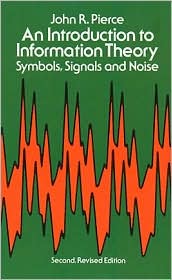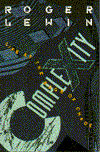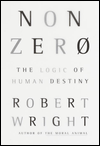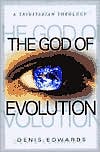CSI: Complex Specified Information (I.D. XII)
Dembski's chapter 6, "Intelligent Design as a Theory of Information," really helps bring into focus my earlier doubts and concerns about his worldview. The chapter is basically about "complex specified information," or CSI, the intangible stuff that "makes the world go round" (p. 160).
The numbers on your VISA card, he says (p. 159), are CSI. That they are "information" is obvious, but a more formal test is that they "reduce uncertainty." For example, when one sends his/her VISA number across the Internet to Amazon.com, he or she reduces Amazon's uncertainty as to what credit account should be charged.
That the VISA-card digits are "complex" stems from the fact that there are 16 of them, so it would be extremely hard for a thief to come up with them at random.
And the fact that the VISA-card digits are "specified" means that they are capable of uniquely identifying you. Were it not for privacy laws, anyone who obtains your VISA account number could determine your identity.
For the same reasons, a Social Security Number or a telephone number is CSI.
In a more general sense, "information" is any content across any communication channel which reduces undertainty to any degree. Numerical measures of the "information content" describe how much the communication reduces uncertainty. These measures of information are, according to set formulas, derivable from the probabilities associated with each possible message or "event." And vice versa — if we know the probability of a certain message or event, we can compute its information content.
In Inferences to Design (I.D. XI), I showed how, in chapter 5, Dembski uses probabilities as ways of demonstrating intelligent design. He infers design by means of what he calls "the complexity-specification criterion," which involves probabilities.
In chapter 6, as Dembski shows, "To infer design by means of the complexity-specification criterion ... is equivalent to detecting complex specified information. ... Design and CSI are, as mathematicians would say, isomorphic" (p. 160).
But the scientific world today, as Dembski also shows (see p. 159), is rife with efforts to turn just about every branch of science into a hunt for CSI and its origins. Of particular interest to me is this assertion of Dembski's: "How CSI gets from an organism's environment into an organism's genome is one of the long-standing questions addressed by the Santa Fe Institute."
An organism's genome is a case of complex specified information. And the Santa Fe Institute is one of the professional homes of theoretical biologist Stuart Kauffman, author of At Home in the Universe. I think of his "search for the laws of self-organization and complexity" — his quest for a "theory of emergence" — as possibly the most intriguing way in which today's science updates Darwin.
Kauffman hopes there is a deep and beautiful lawfulness which makes the emergence of conscious, self-aware creatures like us almost a foregone conclusion. That word, lawfulness, is key, for it ties Kauffman's efforts to those Dembski cites on the part of German biophysicist Manfred Eigen.
Eigen has made his "central problem," Dembski says
... the origin of CSI. Where does CSI come from, and where is it incapable of coming from? According to Eigen, CSI comes from algorithms and natural laws. As he put it [in Steps Toward Life], "Our task is to find an algorithm, a natural law that leads to the origin of [complex specified] information." (p. 160)
This look to me like Stuart Kauffman's task or central problem as well. Typically, he models the "lawfulness" he seeks with computer programs, which are algorithms.
But, as Dembski points out in endnote 17 on p. 292:
What I'm calling "law" ... is a special case of what [earlier] I called "necessity." Except for logical necessity, the two notions are largely interchangeable, though scientists tend to prefer "law," whereas philosophers are equally content with "law" or "necessity."
I want to unpack that. "Necessity" as Dembski uses the term is not the same as "logical necessity." The latter is the case with, for example, the syllogism, "All men are mortal/Socrates is a man/Therefore, Socrates is mortal." If the first two parts — the premises — are true, the third part — the conclusion — cannot be false.
But scientific "necessity" is not syllogistic necessity. It is another word for "lawfulness." For lawfulness to be distinct from syllogistic necessity, but otherwise equivalent to the philosopher's idea of necessity, there must be a built-in degree of freedom that the syllogism does not offer. The only things that are free in the syllogism are its two premises. But in lawful, scientific, non-syllogistic necessity, there must be an extra degree of freedom somewhere.
Otherwise Dembski couldn't say, "Except for logical necessity, the two notions [philosophical and scientific necessity] are largely interchangeable." So there must be a degree of freedom in scientific necessity which keeps it from being merely syllogistic.
Dembski includes this endnote en route to disputing Eigen's (and presumably Kauffman's) assumption that the origin of CSI can lie exclusively in algorithmic lawfulness. "What [algorithms] cannot do ... is originate information," he maintains (p. 160). So, implictly, information comes only from design ... and as a result, Kauffmanian self-organization and other Eigen-like research programs can never account for anything other than "the flow of information" (ibid.)
Hence, I assume Dembski would say that Kauffmanian self-organization is no threat whatever to his theory of intelligent design. It addresses a "flow" issue, not an "origin" issue.
To Dembski, CSI, by isomorphism with design, always satisfies his complexity-specification criterion (see p. 160). Accordingly, it is always contingent, never "necessary," in Dembski's sense of that word. Hence, it would seem not to be algorithmically lawful, to use Eigen's/Kauffman's terminology.
That seems at first blush like a contradiction. A scientist's "law" is at once a "necessity," as endnote 17 on p. 292 vouches. On the other hand, a Kauffmanian "law" which accounts for the "flow" of CSI accounts for the movement of that which is itself intrinsically contingent. It would seem that CSI can only flow from one entity to another. So is each entity a contingency, like that which flows between them, or is it a necessity, like the law(s) by which it flows?
What if we humans, as entities, have our free will as an emergent property? As living entities, we are holistic wholes who are greater than the sum of our parts. However, our parts, at base, are made of CSI: complex specified information.
There may of course be multiple tiers of emergence involved in any given entity, multiple levels of emergent properties of which our human free will would seem to appear at the highest. But at the bottom of all these emergentist tiers is CSI, whose contingent origin (says Dembski) cannot be accounted for by the same laws which non-contingently account for its flow.
Such a set of assumptions would seem to harmonize intelligent design with self-organization, Dembski with Kauffman. In this hypothetical synthesis, information that is complex and specified — i.e., design — would come only from God. Its lawful flow through self-organizing channels would, however, account for all emergent properties, including our own free will!


















0 Comments:
Post a Comment
<< Home